
Journal of Clinical Trials
Open Access
ISSN: 2167-0870

ISSN: 2167-0870
Research Article - (2022)
Traditional Chinese Medicine (TCM) is based on the physiological concept that life is supported by the continuous and all-pervading flow of energy named Chee. This concept has a logic deficiency that has handicapped TCM from entry into modern sciences in spite of the fact that it has been in practice since 2700 BC. In March 2018, the “Interstitium” was formally reported as a newly discovered organ that pervades the entire human body. This author believed that Interstitium as reported could cure TCM’s logic deficiency, thus started a small research program in July. By latching onto Interstitium, and distilling and synthesizing TCM procedures to conform to modern sciences, we have transformed TCM to a modern empirical science. We have also formulated a theory of Chee to enable TCM to be a full-fledged Scientific TCM (STCM). The method and procedure employed in developing this theory are similar to those taken by Julius Stratton in formulating classical macroscopic electromagnetic theory discussed in his book of 1941. Potential biomedical applications for STCM are many, including mental illnesses, inflammation, allergy, and infectious diseases. Since reported results are preliminary and lack independent verification, global collaborative efforts, both technical and business, are earnestly solicited openly.
Bio-electromagnetics; Biomedical computing; Biological system modeling; Microwave imaging
During 1975-1991 this author (“I” or “we” hereinafter) was part of a team at Georgia Institute of Technology, conducting pioneering research in Electromagnetics (EM), in particular Bio Electromagnetics (BEM) and their numerical computation, microwave imaging, hyperthermia treatment of tumor, etc., [1-6]. We had the rare and unique opportunity in developing and running large computer programs as the newly acquired CDC Cyber 70/74 supercomputer was free to faculty usage when computers were made only in the U.S. and under export control.
In March 2018, “Interstitium” made its highly publicized debut as a new human organ, with implications to all organs, most tissues, and the mechanisms of most major diseases, endorsed by leading magazines such as National Geographic [7]. I happened to have some familiarity with Traditional Chinese Medicine (TCM) that has been in practice before 2700 BC. Noting that the structure of Interstitium closely resembled Jing Luo in TCM, I saw its potential high impacts and immediately started an internal project in July 2018 to develop Scientific TCM (STCM). This paper reports some of the findings and initial successes thus far.
TCM in a nutshell and its logic flaw
TCM is based on the concept that human vitality relies on “Chee” being circulated and permeated adequately throughout the human body via networks called Jing Luo. (Chee and Jing Luo are phonetic translation for the Chinese words Qi and Meridian). There are over 365 Shua (“穴”) where Chee is generated and regulated. Shua is the phonetic translation for the Chinese character “穴” which means “cavity.” Unfortunately, 穴 has been misleadingly translated to “point” in the English literature except for which translated it to “hole” [8].
The system of the networks of Jing Luo throughout the human body is extensively discussed by Guo [9]. Figure 1 shows the photo of an anatomical sketch of Shua (穴) dated in 1960. The captions in the colored drawing are anatomic terms: epithelial and connective tissues; arterioles; neuron; bundles of fibers and neuron, fat, bone, epidermis, bone/cartilage membrane, etc.
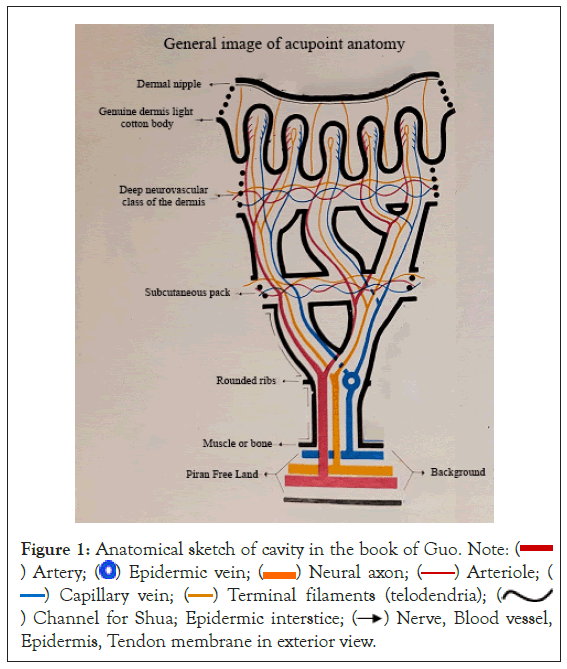
Figure 1: Anatomical sketch of cavity in the book of Guo.




Recent displays on Jing Luo are six hanging figures printed in 2003 that provide overviews in different perspective views commonly accepted in TCM [10]. Figure 2 and Table 1 shows the front view of the fourteen (14) main networks (with heading #1). Figure 3 and Table 2 shows the front view of the eight (8) secondary networks (with heading #4). Note that each figure has table of Chinese- English translation. In TCM Chee is a conceptual force or power within the human body. When Chee became so powerful it was weaponized in Chinese martial arts as Qigong in early Song dynasty (960-1279).
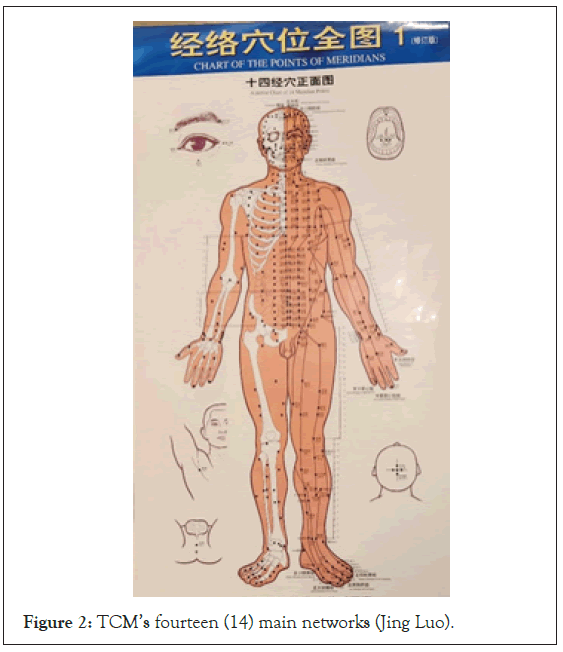
Figure 2: TCM’s fourteen (14) main networks (Jing Luo).
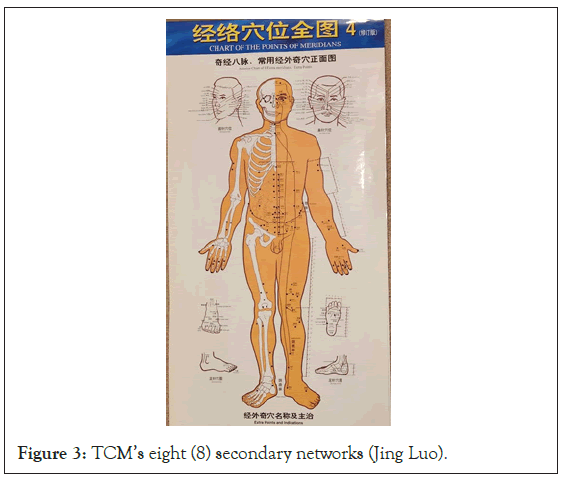
Figure 3: TCM’s eight (8) secondary networks (Jing Luo).
| Stomach meridian of foot | Lung meridian of hand | Ren meridian | Gallbladder meridian of foot |
|---|---|---|---|
| Tear container (ST 1) | Central palace (LU 1) | Meeting of yin (RN 1) | Pupil crevice (GB 1) |
| Four whites (ST 2) | Cloud door (LU 2) | Curved bone (RN 2) | Hearing convergence (GB 2) |
| Great crevice (ST 3) | Heavenly residence (LU 3) | Middle pole (RN 3) | Upper gate (GB 3) |
| Earth granary (ST 4) | Guarding white (LU 4) | Gate of origin (RN 4 ) | Forehead fullness (GB 4) |
| Great reception (ST 5) | Cubit marsh (LU 5) | Stone gate (RN 5) | Hanging skull (GB 5) |
| Jaw bone (ST 6) | Maximum opening (LU 6) | Sea of qi (RN 6) | Suspended hair (GB 6) |
| Below the joint (ST 7) | Broken sequence (LU 7) | Yin intersection (RN 7) | Temporal hairline Curve (GB 7) |
| Head support ( ST 8) | Channel canal (LU 8) | Spirit gateway (RN 8) | Leading valley (GB 8) |
| Man's welcome (ST 9) | Great abyss (LU 9) | Water separation (RN 9) | Celestial rushing (GB 9) |
| Water prominence (ST 10) | Fish border (LU 10) | Lower epigastrium (RN 10) | Floating white (GB 10) |
| Qi abode (ST 11) | Lesser metal (Lu 11) | Interior strengthening (RN 11) | Head portal yin (GB 11) |
| Empty basin (ST 12) | - | Middle epigastrium (RN 12) | Mastoid bone (GB 12) |
| Qi door (ST 13) | - | Upper epigastrium (RN 13) | Root spirit (GB 13) |
| Store room (ST 14) | - | Great palace (RN 14) | Yang white (GB 14) |
| Roof (ST 15) | - | Dove tail (RN 15) | Head overlooking tears (GB 15) |
| Breast window (ST 16) | - | Central palace (RN 16) | Eye window (GB 16) |
| Breast centre (ST 17) | - | Chest centre (RN 17) | Upright construction (GB 17) |
| Breast root (ST 18) | - | Jade hall (RN 18) | Spirit receiver (GB 18) |
| Not contained (ST 19) | - | Purple palace (RN 19) | Brain hollow (GB 19) |
| Assuming fullness (ST 20) | - | Floral canopy (RN 20) | Wind Pool (GB 20) |
| Beam gate (ST 21) | - | Jade pivot (RN 21) | Shoulder well (GB 21) |
| Pass gate (ST 22) | - | Celestial prominence (RN 22) | Armpit abyss (GB 22) |
| Supreme unity (ST 23) | - | Corner spring (RN 23) | Sinew seat (GB 23) |
| Slippery flesh gate (ST 24) | - | Container of fluids (RN 24) | Sun and moon (GB 24) |
| Celestial pivot (ST 25) | - | - | Capital gate (GB 25) |
| Outer mound (ST 26 ) | - | - | Girdle vessel (GB 26) |
| Big gigantic (ST 27) | - | - | Fifth pivot (GB 27) |
| Water passage (ST 28) | - | - | Linking path (GB 28) |
| Return (ST 29) | - | - | Squatting crevice (GB 29) |
| Penetrating qi (ST 30) | - | - | Jumping round (GB 30) |
| Thigh gate (ST 31) | - | - | Wind market (GB 31) |
| Crouching rabbit (ST 32) | - | - | Central river (GB 32) |
| Yin market (ST 33) | - | - | Knee yang gate (GB 33) |
| Beam mound (ST 34) | - | - | Yang hill spring (GB 34) |
| Calf's nose (ST 35) | - | - | Yang crossing (GB 35) |
| Leg three miles (ST 36) | - | - | Outer hill (GB 36) |
| Great upper hollow (ST 37) | - | - | Bright light (GB 37) |
| Narrow opening (ST 38) | Yang aid (GB 38) | ||
| Lower great hollow (ST 39) | - | - | Suspended bell (GB 39) |
| Abundant bulge (ST 40) | - | - | Hill ruins (GB 40) |
| Stream divide (ST 41) | - | - | Foot falling tears (GB 41) |
| Rushing yang (ST 42) | - | - | Earth fivefold convergence (GB 42) |
| Sunken valley (ST 43) | - | - | Clamped stream (GB 43) |
| Inner courtyard (ST 44) | - | - | Foot portal yin (GB 44) |
| Sick mouth (ST 45) | - | - |
Table 1: TCM’s fourteen (14) main networks (Jing Luo).
| Strange acupuncture outside the meridian | |
|---|---|
| Points | Indicators |
| Neurological disorder | Epilepsi |
| Blood disease | Hemetemesis, epintaxis, bloodin, stool, uterine bleedina |
| Outdoor allergens | Cough, brochial asthma |
| Skin disease | Carbuncle, Swelling |
| Fresh Air | Hemorrboid, lumbago, emission |
| Blood disorder | Diabetes, melitus, frequency of micturition |
| Conjunctiva | Anterior, headache, facial paralysis, eye musclepanysis, |
| Bell's palsy | Migrane headache, eye disorders, facial nerve spasmi, facial paralysis |
| Multiple sclerosis | Optic astrophyjoptic neuritis, fundus oculi disorders |
| Chronic sinusitis | Nasal disorders |
| Appendix | Acute apendicitis |
| Epistaxis | Nosebleeds |
| Indigestion | Epigastric pain |
| Infections | Acute lower abdominal pain, disrhes, dysentery |
| Inguinal hernia | Hemia, abdominal pain, sterility |
| Genitourinary disorders | Sterility, testitin, uterine bleeding, cystitis, dysuria |
| Gynaecological diseases | Uterine prolspse, sterility, endometritis, hernia, testitis |
| Bordetella pertussis | Infantile mainutrition, whooping cough, infantile indigestion |
| Conversion disorders | Ederna, hysteria |
| Bedwetting | Tumbaga, enuresis |
| Allergic reactions | Headache, dizziness, rhinitis, naial obstruction |
| Sensation changes | Femur anthritis, nervus femur pain |
| Measles | Measles jower extremities warts |
| Hyperglycaemia | Diabetes mellitus, frequency of micturition |
| Chronic pain | Kind pain |
| Nutritional disorders | Lumbago, beriberi |
| Inguinal hernia | Inguinal hernia, beriberi |
| Swollen knee | Swelling of the knee joint |
| Muscle paralysis | Knee joint pain, beriberi |
| Jaundice | Biliary tract disorder |
Table 2: TCM’s eight (8) secondary networks (Jing Luo).
Also in early Song dynasty, two identical life-size bronze acupuncture figures, named Tien Shin Tong Zeng, were cast and inscribed with the Chee networks (Jing Luo) and Shua (穴), pp. A-18-20. Around 1900 one of the two models disappeared, and the other has survived in Japan National Museum. Modern bronze replicas of various sizes are readily available in the market, as exemplified by the front view of one model priced at $960 shown in Figure 4.
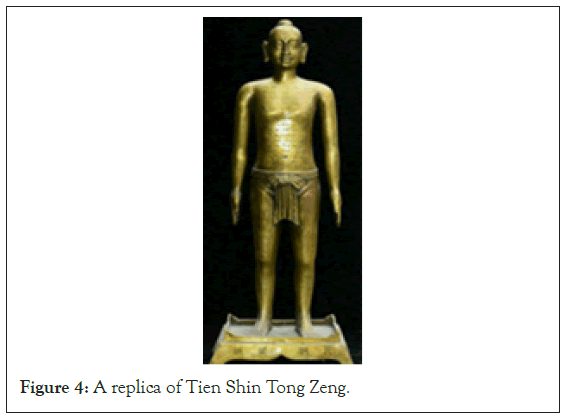
Figure 4: A replica of Tien Shin Tong Zeng.
Although TCM has been practiced in China since 2700 BC, and in many parts of the world including Western Europe, it is still considered-justifiably-to be “hardly backed by scientific studies” in 2020 [11]. Indeed, TCM has a long-standing fundamental logic flaw: While Chee must permeate throughout the entire body; its pathways for transport are limited to Jing Luo that has only twentytwo networks.
Since the interstitium discovered in 2018 permeates essentially throughout the entire human body, we accepted it as Chee’s pathways with Jing Luo as major thoroughfares for Chee transport. We then distilled TCM into concentrates and synthesized them to conform to modern sciences, piece by piece thus creating a “Scientific TCM” (STCM) also piece by piece.
To be a full-fledged science, a theory is needed. A theory of Chee was created as presented below. The method and procedure followed closely the approach of Stratton in electromagnetic theory in 1941 and well-established works in relevant modern sciences today, in particular [12-24]. This section presents the theory of Chee, the resulting field equations, and their computation and validation.
The theory of chee
A theory of Chee for TCM has been formulated under the following six postulates:
1. Vitality of human body relies on adequate Chee circulating and permeating throughout the body. Chee is a power (or flow of energy) containing electromagnetic, mechanical, thermal, and chemical components; and exhibits Poynting vector power intensity in Watt/m2.
2. Interstitium constitutes the main pathways for Chee transport.
3. Major pathways of Chee consist of fourteen (14) main networks and eight (8) secondary networks.
4.There are over 365 Shua’s along the pathways that regulate and optimize Chee under the top command of the brain.
5. Major Shua’s have direct fast links to each other, to specific organs, and to specific parts of the brain.
6. Some Shua’s are super-Shua’s that can generate strong or special signals like a generalized function or distribution [25].
Macroscopic field equations based on the theory of chee
When Stratton published his classic book on modern macroscopic Electromagnetic (EM) theory in 1941, he pointed out that “Eventually the field vectors must be defined in terms of the experiments by which they can be measured...” The six postulates in the theory of Chee are based on voluminous TCM practices scattered in Chinese literature over the past 30 centuries.
Under the theory of Chee, the general macroscopic problem of interest is set up as follows. A live human body occupying a subspace H, which may be stimulated or explored by an applicator or instrument. The sources are either external or internal, denoted by JE and JI; JE is generated by an applicator or instrument and JI by the human body.
Chee in the field equations is denoted by the Greek alphabet χ. Thus total Chee is denoted by χT(r, t), where r is the position vector for the location of the field and t is time, pp. 89-90, 453, 455. Total Chee, denoted by χT, comprises EM, ME, thermal, and chemical components denoted by χEM, χME, χTH, and χCH, respectively. χT is a function, denoted by Ƭ, expressed as
xT (r,t ) = T [xEM (r,t ), xME (r,t ), xTH (r,t ), xCH (r,t )] (1)
Eq. (1) is in the time domain, where numerical solution of vector field equations is difficult and costly. As a result, numerical solutions are often performed in the frequency domain. This can be achieved by transforming the time-domain Eq. (1) to the frequency domain via Fourier Transform (FT). Note that each χ in Eq. (1) is in the time domain is italicized. In the frequency domain Eq. (1) becomes
xT (r,ω ) = T [xEM (r,ω ), xME (r,ω ), xTH (r,ω ), xCH (r,ω )] (2)
Where ω equals 2πf, f is the frequency. χ is in the frequency domain thus not italicized.
The theory of Chee and its vector field equations have been presented in IMBioC in May 2022 and more extensively to a much larger audience in July 2022. This paper also addresses significant formal and informal comments in these two symposiums [26,27].
Some remarks on the field equations
1. EM, ME, thermal and chemical components of Chee (χEM, χME, χTH, χCH) are well understood and clearly defined parameters in physics outside human tissues, but have to be carefully dealt with inside human tissues. Note that the fields can be generated by either of both JI and JE.
2. For fields generated by JI, χEM predominates as nerve impulses, which manifest slow speeds <100 m/sec, p. 195. However, these nerve impulses will take off as EM waves when nearing nonaquatic regions even within subspace H and propagate at the speed of light in the medium. The speeds of χME, χTH and χCH are slower than that of χEM since they are created by a stimulus in a neuron or nerve fibre to begin with, and likely transformed into χEM traveling along nerve fibres as nerve impulses.
3. The chemical component χCH in the time domain is complicated, yet χCH in the frequency domain is fairly straightforward. For example, hemoglobin in motion is a part of χCH having not only the primary function of iron-containing oxygen-transport but also several other functions such as antioxidant, regulator of iron metabolism, etc.
4. The formulation of the field equations can take either a differential equation approach or an integral equation approach. The former is much simpler, thus preferred for formulations in acupuncture, reflexology, physical therapy, etc. The latter is much more complicated, but is preferred for hyperthermia therapy, precision diagnostic instruments, etc. that require high accuracy. Under EM stimulation, each Shua becomes a source of Chee.
5. According to the third postulate, major pathways of Chee consist of fourteen main networks and eight secondary networks. The problem can be formulated as a network in a straightforward manner. A network is generally a set of differential equations, and even algebraic equations in the simplest case.
Validation of the theory of chee
The method of validation has been presented in May 2022 and to a much larger audience in July 2022 [28]. It is the same as Stratton had for his EM theory: “Eventually, the field vectors must be defined in terms of the experiments by which they can be measured. Until these experiments are formulated, there is no reason to consider one vector more fundamental than another, and we shall apply the word intensity to mean indiscriminately the strength or magnitude of any of the four vectors at a point in space and time.”
Additionally, the remarks by Albert Einstein on “The experimental confirmation of the General Theory of Relativity”, in particular the following excerpts, verbatim, are lucid and enlightening [29].
“From a systematic theoretical point of view, we may imagine the process of evolution of an empirical science to be a continuous process of induction. Theories are evolved and expressed in short compass as statements of a large number of individual observations in the form of empirical laws, from which the general laws can be ascertained by comparison. Regarded in this way, the development of a science bears some resemblance to the compilation of a classified catalogue. It is, as it were, a purely empirical enterprise.
Corresponding to the same complex [sic] of empirical data, there may be several theories. As an example, a case of general interest is available in the province of biology, in the Darwinian theory of species by selection in the struggle for existence, and in the theory of development which is based on the hypothesis of the hereditary transmission of acquired characters. We have another instance of far-reaching agreement between the deductions from two theories in Newtonian mechanics on the one hand, and on the general theory of relativity on the other.”
Our validation efforts have been quite easy and successful to my pleasant surprise! It soon dawned on me that, in comparison, instrumentations available for empirical exploration on Chee theory are before 1950 much more plenty and accurate than those available for EM theory.
However, since the results are still preliminary and lack independent verifications, and STCM is much more complex and multi-disciplinary, we soon started to seek collaborations in research and business, beginning with the lead authors of the following publications [30-33].
Instruments and applicators
Technical parameters, approaches, and assumptions
To facilitate computation and measurement, we made the following reasonable assumptions on the instruments and applicators for STCM and the study on the theory of Chee.
1. Applications are limited to non-invasive diagnostic, monitoring, and therapeutic instruments and procedures on live human bodies.
2. Therapeutic instruments employ non-invasive ultra-wideband phased arrays spanning mm wave frequencies over 25-3000 GHz for focused stimulation like acupuncture, hyperthermia, etc.
3. Diagnostic and monitoring instruments employ non-invasive ultra-wideband phased arrays spanning mm wave frequencies over 25-3000 GHz to map Chee.
4. The speed of χ is very slow (as discussed earlier in III.C) : <100 m/sec for χEM, and decreasing further and further down for χME, χTH, and χCH.
5. The EM dosimetry for applicators can benefit from the discussions in (15).
Metering, monitoring, and mapping of chee: Design and prototyping of instruments for non-invasive metering, monitoring and mapping of Chee is on a promising track. A Chee mapping instrument is planned for licensed users and institutions in early 2022.
Applicators for acupuncture and hyperthermia: Acupuncture needles used in TCM are to be replaced by non-invasive and noncontact EM phased arrays in STCM. This phased array is based on two WEO technologies: (1) Stealth Communication (SC) for 5G/6G Wireless to ensure spectral efficiency and privacy/cyber security [34,35]; (2) Ultra-Wideband (UWB) Travelling Wave Array Antenna (TWAA) technology [36].
Key technologies for STCM instrumentation
Key technologies for STCM include, among others, three WEO technologies: (1) SC just described; (2) UWB TWAA just described; (3) Computation and measurement for planar near-field intensity. The second technology UWB TWAA, as shown in Figure 5, covering 2-12 GHz and scanning 60⁰ off broadside was published in 2016 and needs to be scaled up to higher mm wave frequency bands, for which we are leveraging similar efforts in the cellphone industry, which is moving up to 28-95 GHz for 5G and 100-3000 GHz for 6G. At these high frequencies, the size of the applicators will be greatly reduced to fit smartphones. Our efforts to scale up to higher frequencies were presented in 2020.
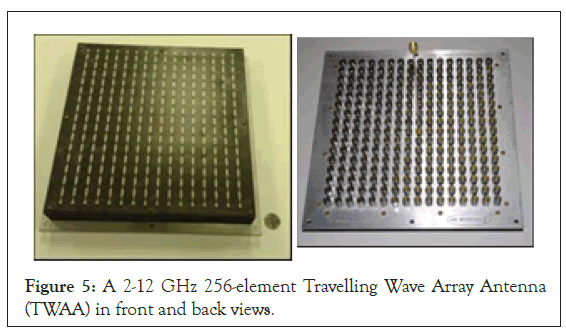
Figure 5: A 2-12 GHz 256-element Travelling Wave Array Antenna (TWAA) in front and back views.
Computation and measurement of planar near-field intensity is based on the theory of Plane-Wave Spectrum (PWS) representation of fields. I cleared up some defects in the theory and practices in mid-1980s [37]. Our system was so satisfactory that it was installed on high-value platforms.
Potential applications for STCM
Under STCM, beneath the recorded empirical findings in TCM over the past 47 centuries, we are uncovering much potential solution for major health problems that modern science and technology are unable or too costly to solve, as follows.
TCM treatments on infectious diseases during 1930-1990 were well discussed [9,45]. It is worth noting that reference is the most authoritative and scientific book on the Chee-based martial art Tai Chi Chun, discussing extensively treatments on tuberculosis in pp. 37-45, Appendix 13-chapter. Indeed, during 1930-80 M. C. Zeng was the leading expert in both Tai Chi and TCM [45].
Allergies: Allergies manifest in the form of tissue inflammation and excretion of fluidal histamine both acute and chronic are closely related with infectious diseases. Two members of our STCM team both got rid of their pollen allergies at the age of late twenties and late forties, rather magically, by two professional master Chee experts.
Benign and cancerous tumors: For safety and efficacy, we are limiting our studying to live tissues and organs that are not deeper than, say, 50 mm, under the surface of skin. In this way, therapeutic and diagnostic procedures can be performed easily on skin, bone, breast, prostate, testicle, ear, eye, nose, throat, hand, foot, spine, etc.
Brain diseases due to degeneration or death of neurons: Postulate 6 of the Chee theory is: Some Shua’s are super-Shua’s that can generate strong or special signals as distribution or generalized function. Thus, tests exploring psychic abilities and the feasibility to deliver messages via super-Shua are high on the list of tests that evaluate the Chee theory. This may, for example, lead to solution for the treatment of brain diseases caused by degeneration and death of its neurons in the brain, particularly Parkinson’s Disease (PD), Alzheimer’s Disease (AD), and depression. This investigation may be expanded later to gene therapy such as the NeuroD1 approach, which looked promising according to a 2019 paper though recently had a setback.
A theory of Chee has been created and validated by experimentations, to transform TCM into Scientific TCM (STCM), which is now ready for acceptance in main-stream modern medicine and health care. Although currently focused on easier, less costly, and economically larger problems, it is shown that potential applications are plentiful, and that the physiological concept based on the theory of Chee can lead to new scientific discoveries as well as new diagnostic and therapeutic instrumentation and procedures, some with robotic and even supernatural potentials. Since the results are still preliminary and lack independent verifications, efforts have been started by the author to seek collaborative technical and business work.
This paper is dedicated to this author’s father, Dr. Chen-Ching Wang. Since mid-1930s he had a life-long career as a physician, thus provided me with rich environments and early exposure to modern medicine and TCM, including the serendipitous encounters in 1958 with J. L. Guo, the author of reference 8.
[Crossref], [Google Scholar]
[Crossref], [Google Scholar]
[Crossref], [Google Scholar]
[Crossref], [Google Scholar]
[Crossref], [Google Scholar], [Pubmed]
[Crossref], [Google Scholar]
[Crossref], [Google Scholar], [Pubmed]
[Crossref], [Google Scholar]
[Crossref], [Google Scholar]
[Crossref], [Google Scholar]
[Crossref], [Google Scholar]
[Crossref], [Google Scholar]
[Crossref], [Google Scholar]
[Crossref], [Google Scholar], [Pubmed]
[Crossref], [Google Scholar]
[Crossref], [Google Scholar]
[Crossref], [Google Scholar]
[Crossref], [Google Scholar]
[Crossref], [Google Scholar]
[Crossref], [Google Scholar]
[Crossref], [Google Scholar]
[Crossref], [Google Scholar]
[Crossref], [Google Scholar]
[Crossref], [Google Scholar]
[Crossref], [Google Scholar]
[Crossref], [Google Scholar]
[Crossref], [Google Scholar], [Pubmed]
[Crossref], [Google Scholar], [Pubmed]
[Crossref], [Google Scholar], [Pubmed]
[Crossref], [Google Scholar], [Pubmed]
[Google Scholar], [Pubmed]
[Crossref], [Google Scholar], [Pubmed]
Citation: Wang JJH (2022) Theory and Applications in Biomedical Engineering after Discovering a New Human Organ “Interstitium”. J Clin Trials. S20:008.
Received: 31-Oct-2022, Manuscript No. JCTR-22-19890; Editor assigned: 03-Nov-2022, Pre QC No. JCTR-22-19890(PQ); Reviewed: 17-Nov-2022, QC No. JCTR-22-19890; Revised: 24-Nov-2022, Manuscript No. JCTR-22-19890(R); Published: 01-Dec-2022 , DOI: 10.35248/2167-0870.22.S20.008
Copyright: © 2022 Wang JJH. This is an open-access article distributed under the terms of the Creative Commons Attribution License, which permits unrestricted use, distribution, and reproduction in any medium, provided the original author and source are credited.